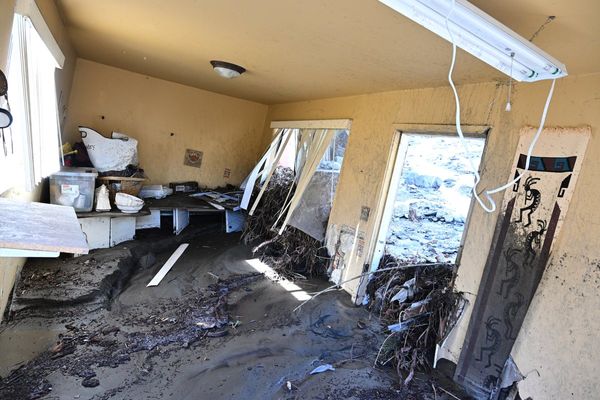
Aviation jargon can hide all kinds of horrors. This month Boeing introduced a new phrase to a wider audience – Quality escape (n.): part of a 737 Max plane falling off at 14,000ft, producing a deafening roar as the air rushes past passengers fast enough to rip phones from hands and clothing from bodies.
It appears that someone in the factory failed to properly fit bolts securing the plug panel for an unused door. For followers of Boeing’s travails over recent years, the apparent failures in quality control that led to the incident were scarcely believable, less than five years after regulators grounded the 737 Max following two deadly crashes caused by flawed design.
Remarkably, no one was seriously injured or killed in the latest incident, which took place on an Alaska Airlines flight on 5 January from Portland, Oregon. But Dave Calhoun, Boeing’s chief executive, will face intense scrutiny from investors on Wednesday as the company publishes its results for the past year. Once again, the US’s plane-making champion is facing deep questions about its future.
Calhoun quickly accepted the manufacturer had at least partial responsibility for the latest incident – in marked contrast to the heavily criticised dithering and diversion by his predecessor, Dennis Muilenburg, during the previous 737 Max crisis. The Federal Aviation Administration (FAA), the US regulator, last week said that it would allow the variant of the 737 Max 9 with the door plug to fly again – after demanding checks to the bolts on every plane.
Yet the FAA’s green light came with a major caveat: Boeing would not be allowed to expand production of the 737 Max, its bestselling plane, until the regulator was “satisfied that the quality control issues uncovered during this process are resolved”. Calhoun will be pushed for guidance on the cost of the resulting delays to deliveries, although he may struggle to give precise numbers.
Richard Aboulafia, managing director at AeroDynamic Advisory, a consultancy, said he believed Boeing had “under-resourced production ramp-up”, leaving too few workers trying to make too many planes. He said that was a symptom of Boeing’s focus in recent decades on financial performance at the expense of its historical design prowess.
The financial focus was most closely associated with Jim McNerney, chief executive for the decade up to 2015. McNerney had learned his trade from Jack Welch, the boss of General Electric (GE). Welch became a household name by pumping up financial performance, only for his legacy to be questioned when GE nearly collapsed during the financial crisis.
Calhoun is himself a 26-year GE veteran. Boeing appears to be lining up Stephanie Pope as a potential next leader. But Pope, who was promoted on 1 January to chief operating officer, also comes from a financial rather than engineering background.
Nick Cunningham, an aerospace analyst at Agency Partners, said Boeing needed new leaders to return its focus to being “one of the greatest engineering companies the world has ever seen” rather than an also-ran that was steadily losing market share to its European rival Airbus.
The earlier Max crisis and the pandemic took a heavy financial toll on Boeing, and analysts expect a further $2.1bn (£1.6bn) loss before tax for 2023 – its fifth year in a row in the red – according to forecasts collated by S&P Global Market Intelligence.
Boeing is not in danger of going out of business. The company is too big to fail, a behemoth whose travails are large enough to show up in US GDP figures. It could go to investors to ask for more cash. Some analysts say it could even look to sell its defence arm if the needs of the civil aviation business become acute. And the US government would almost certainly act as a backstop if its crises somehow worsened. But failure is not merely a financial measure, as passengers on the Alaska Airlines flight can attest.
Cunningham said Boeing needed to generate cash to pay for the eventual development of a new plane to replace the ageing 737 – even if Calhoun has said the company will not do so for about a decade. That could be its opportunity to get out of a hole and help it catch up with Airbus, but the latest incident will probably delay that again.
“The issue is the business cycle doesn’t go on for ever,” said Cunningham, meaning the industry could go through a fallow period during which orders and cashflow dry up. “Boeing is running out of time.”







